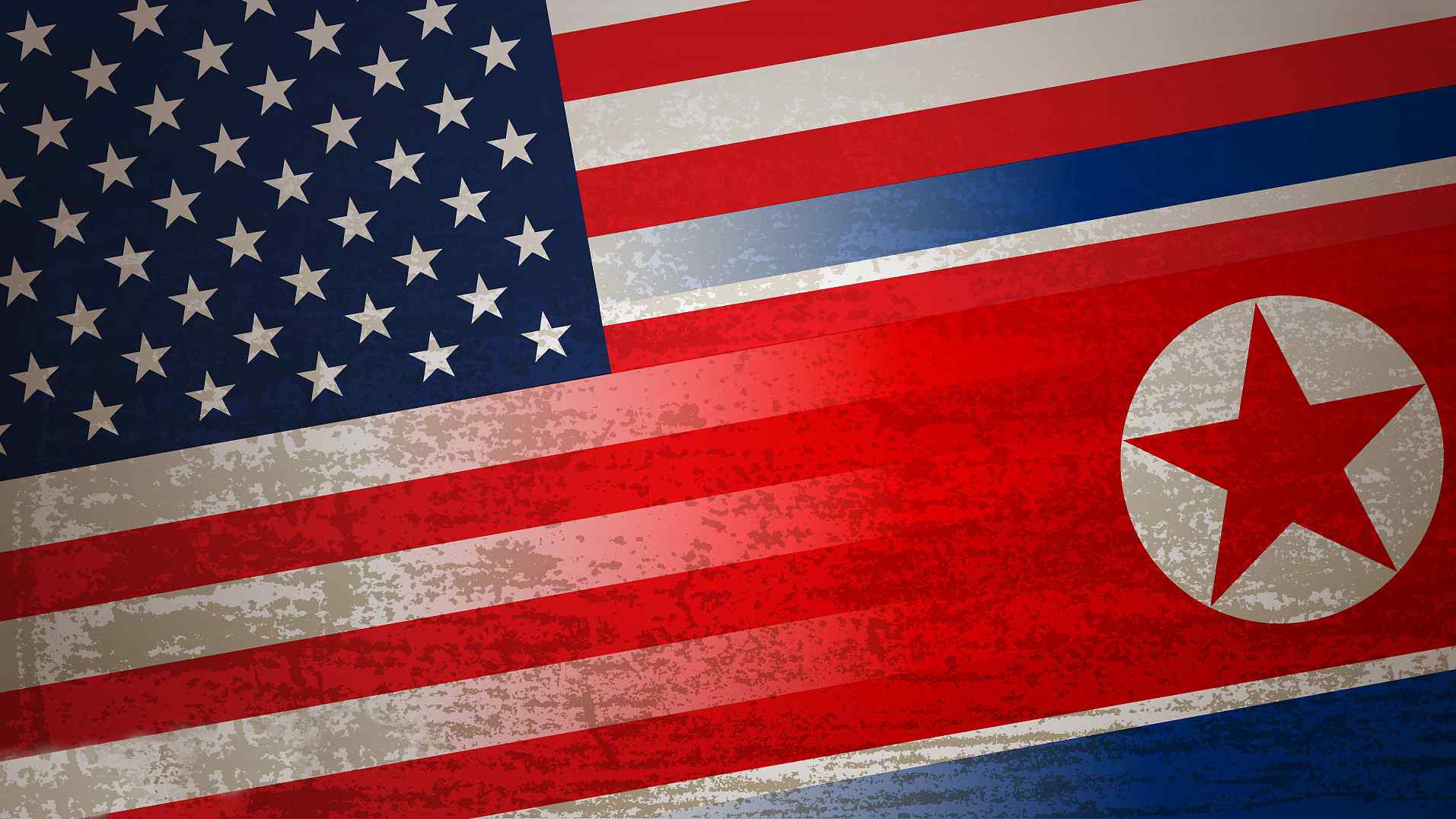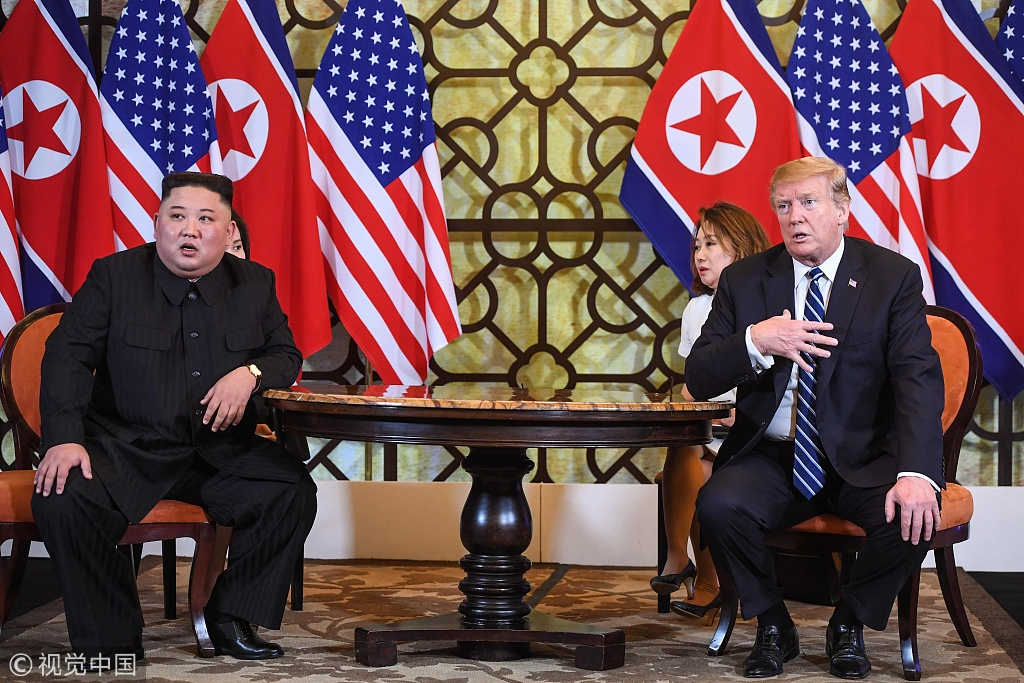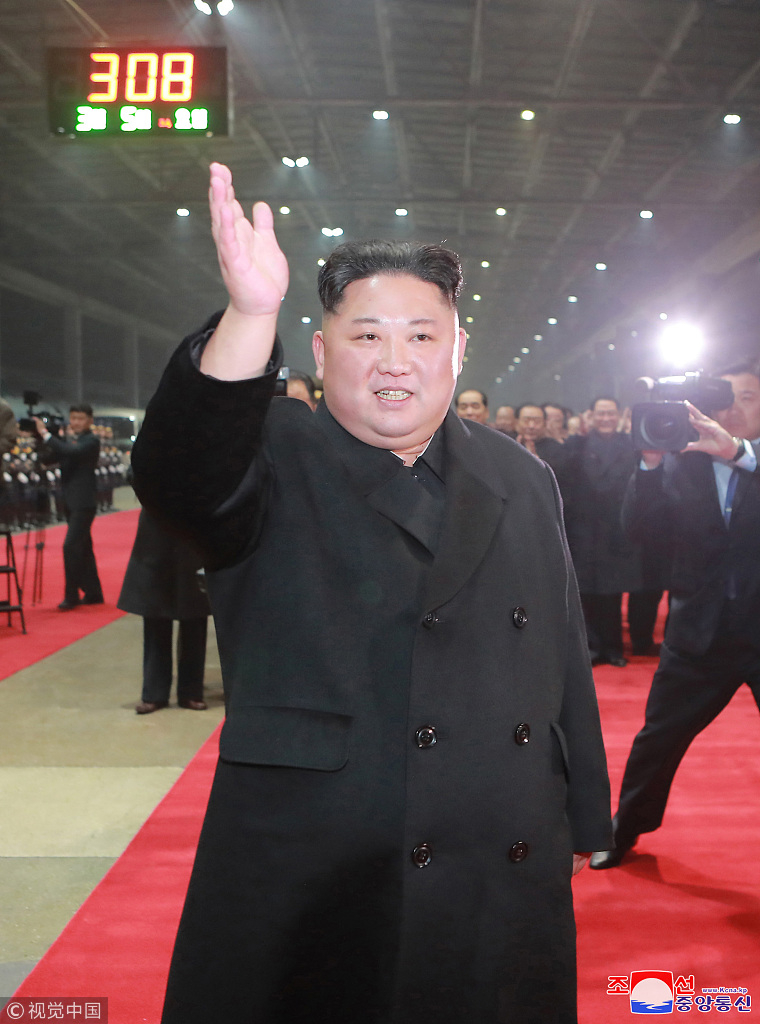
Opinion
10:34, 23-Mar-2019
Trump's DPRK sanctions backtrack
Tom Fowdy

Editor's note: Tom Fowdy graduated with an MSc. in the Chinese Studies from Oxford University after previously majoring in Politics at Durham University. He has published a number of pieces on the international relations of China and the Democratic People's Republic of Korea. The article reflects the author's views, and not necessarily those of CGTN.
The last few days produced some chaotic events. On Thursday evening, the U.S Department of the Treasury announced two new unilateral sanctions designations in regards to the Democratic People's Republic of Korea (DPRK), blacklisting two Chinese shipping companies for their alleged involvement in UN measures evasion with Pyongyang.
The listing came as the fallout from the Hanoi summit the previous month intensified. Only hours after the announcement, the DPRK abruptly announced that it would be withdrawing its staff from the diplomatic liaison office in Kaesong, dealing a blow to an inter-Korean peace initiative established late last year. The spree of announcements left people starting to panic that things were now spiraling out of control.

U.S. President Donald Trump (R) speaks during a meeting with DPRK leader Kim Jong Un at their second summit at the Sofitel Legend Metropole hotel in Hanoi, February 28, 2019. /VCG Photo
U.S. President Donald Trump (R) speaks during a meeting with DPRK leader Kim Jong Un at their second summit at the Sofitel Legend Metropole hotel in Hanoi, February 28, 2019. /VCG Photo
Then suddenly, on Friday evening, a tweet from President Trump emerged, stating: “It was announced today by the U.S. Treasury that additional large scale unilateral measures would be added to those already existing Sanctions on North Korea (DPRK). I have today ordered the withdrawal of those additional Sanctions!”
In a clarifying statement later, White House Press Secretary Sarah Sanders said: “The President likes Chairman Kim.” The events, of course, caused outrage among hawkish voices and congressmen, who quickly moved to accuse the president of selling out on pressure against Pyongyang.
However, this is, in fact, good news. Despite the fallout of the summit and the hardening of the White House's position which subsequently followed, these actions from Trump are in fact a sign that his approach to the DPRK has its limits.
Recognizing the consequences of further escalation, the presidency does not want to see a return to the DPRK missile testing which would enhance their capabilities and thus the risk to the United States.
In this case, the comments were a desperate effort to offer incentives to Pyongyang to continue negotiations to prevent the situation deteriorating. Although large scale differences and interests remain in the approach to denuclearization, the most realistic scenario is simply a long stalemate. Neither at this point will openly disavow the other.
The Trump administration ended the summit at Hanoi abruptly because they ultimately decided the proposed agreement would fall short of their policy goal of the “final and fully verified denuclearization of the Korean Peninsula,” with domestic political pressure, combined with the influence of hardliners such as John Bolton, strengthening Trump's resolve to gain a more comprehensive deal in line with the U.S. demands.
However, following the summit the presidency was very careful to keep the door open to diplomacy. Despite Pyongyang's evident displeasure, not once did Trump himself make any provocative or threatening remarks to DPRK leader Kim Jong Un, clearly showing awareness of what was at stake. While John Bolton did make threats of increased sanctions, he too at least emphasized the door was still open to “making a deal.”

DPRK leader Kim Jong Un arrives in Pyongyang, March 5, 2019. /VCG Photo
DPRK leader Kim Jong Un arrives in Pyongyang, March 5, 2019. /VCG Photo
Despite taking a harder line, what is behind this bid to stick to diplomacy? The White House recognizes that escalating pressure on Pyongyang will ultimately prove counterproductive. Since February, both sides have toyed with their leverage – Bolton indirectly threatening more sanctions and the DPRK threatening a resumption in tests, but these are just bids to draw the other back to the table, neither wants to truly have to follow through with their threats.
For Washington, increased missile testing from Pyongyang is in fact bad news, because it will increase the country's nuclear capabilities and allow it to enhance its military hand against the United States, further diminishing any prospects for denuclearization. The Trump administration wanted to “end the nuclear threat” to the American homeland, not accelerate it. Pushing the country into a corner would render them no other choice.
Thus, Trump's tweet to Kim Jong Un and the follow-up comments seem to signal that he is, in fact, aware of the consequences of escalatory action. The president still wants to negotiate a deal; to throw that away would prove a dramatic loss of political face for him and a forsaking of his goal.
Thus, he is prepared to wait for the DPRK, hence his comments of “no rush” but is ultimately apprehensive against provocative measures. In making that tweet, he is offering Kim Jong Un an incentive, hoping that in doing so he can reclaim some stability to the situation and stop its downward decline.
Given this, there is no need to be too pessimistic. A return to the “fire and fury” saga of 2017 remains unlikely because it is not in the political interests of Washington or Pyongyang to do so. Both sides want to talk, the problem is the huge difference in terms, expectations, goals and a stubborn refusal to meet in the middle.
More than likely, we are looking at a prolonged stalemate if the two sides cannot agree, than a total collapse of diplomacy. Trump has illustrated his intent clearly.
(If you want to contribute and have specific expertise, please contact us at opinions@cgtn.com.)

SITEMAP
Copyright © 2018 CGTN. Beijing ICP prepared NO.16065310-3
Copyright © 2018 CGTN. Beijing ICP prepared NO.16065310-3